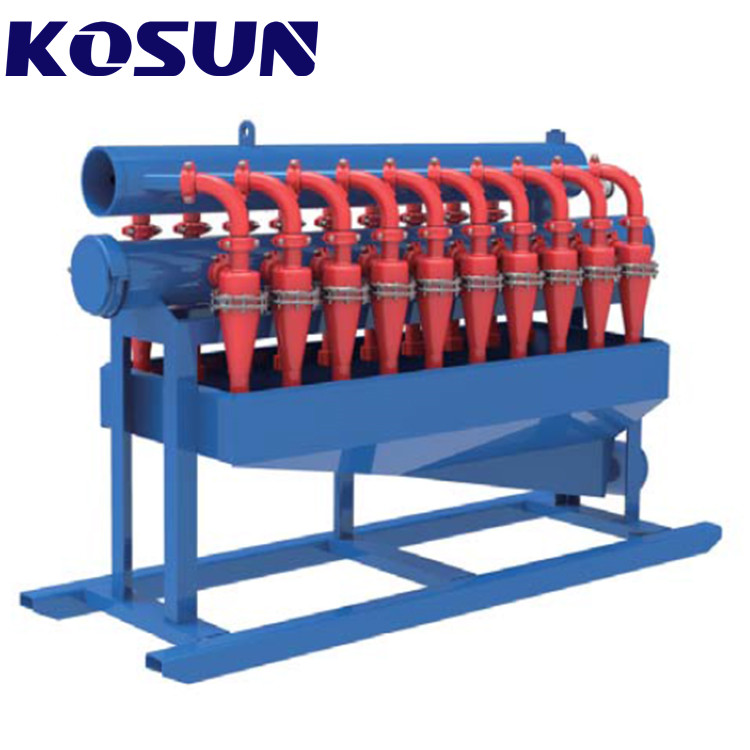

Classification of Cyclones in Solids Control Equipment
Pub Date:Jul 19, 2021 | Views:143 |
Cyclone is the key to solids control equipment mud cleaner and desander. Understanding the classification of cyclones can make a better choice of mud treatment equipment.

According to different diameters, cyclones can be divided into three types: desander, desilter and micro cyclone:
1. Desander: The cyclone with a diameter of 150~300mm is called a desander. Its ability to process drilling fluid is generally not less than 20~120mm³/h when the input pressure is 0.2Mpa. The desander in the normal state can remove about 95% of the drill cuttings larger than 74 μm and 50% of the drill cuttings larger than 44 μm. When selecting a desander, its allowable processing capacity should be 1.25 times the maximum displacement during drilling.
2. Desilter: a cyclone with a diameter of 100~150mm is called a desilter. When the input pressure is 0.25Mpa, its processing capacity is not less than 10~15m³/h. The desander under normal working condition can remove 95% of the drill cuttings larger than 44 microns and 50% of the drill cuttings larger than 15 microns. The permitted processing capacity of the desilter should be 1.25 to 1.5 times the maximum displacement during drilling.
3. Micro cyclone: a cyclone with a diameter of 50mm is called a micro cyclone. Its processing capacity is not less than 5m3/h when the input pressure is 0.25Mpa. The separated particles range from 7 to 25 microns. Mainly used for non-aggravated drilling fluids to remove ultrafine particles.